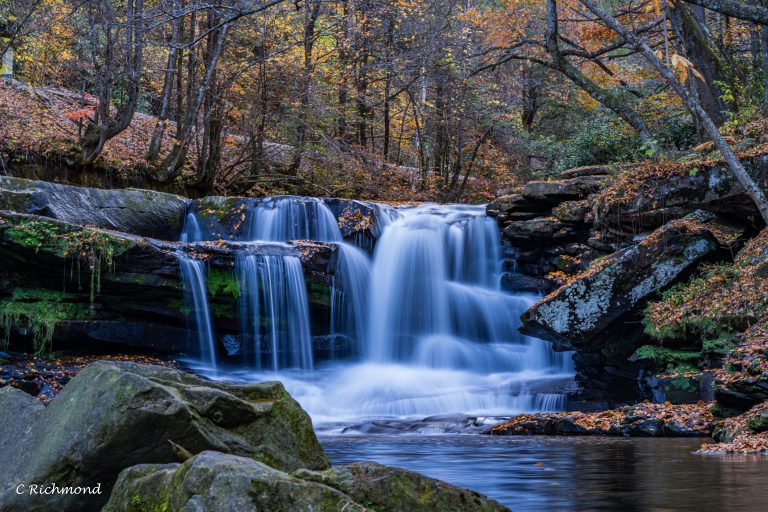A Beginner’s Guide to Astrophotography
A Beginner’s Guide to Landscape Astrophotography: 20 Tips
Astrophotography can seem like a daunting hobby to embark upon, but with the right guidance, even beginners can capture awe-inspiring images of the night sky. I remember my first astrophotography shoot vividly; it was a blend of excitement and nervous anticipation as I set out to photograph the Milky Way. That night was a revelation, and since then, landscape astrophotography has become my passionate pursuit. I’m thrilled to share this comprehensive guide, tailored specifically for beginners eager to capture the cosmos.
Tips to Get Started with Landscape Astrophotography
1. Understanding the Basics
First and foremost, wrap your head around the core concepts of astrophotography. It’s an exquisite form of photography where we marry the night landscape with the cosmos. As a beginner in this genre, appreciate the marriage of patience and technical precision this art form demands.
2. Choosing the Right Camera and Lens
A full-frame camera is your best ally when starting astrophotography. It’s not just any camera for astro photography; its large sensor camera captures as much light as possible, essential for those long exposures. Pair it with a fast, wide-angle lens to embrace more of the landscape astroscene. I found the Sony Alpha 7RV with a Sony 20mm f/1.4 lens to be a great option.
3. Camera Settings: Navigating the Manual Mode
Dive into manual mode, a cornerstone camera setting for astrophotography. Beginners might find it tricky at first, but control over shutter speed, aperture, and ISO in digital photography, especially in low-light photography, is crucial. Set your camera to capture as much of the night’s beauty as possible.
4. ISO: The Balancing Act
Landscape astrophotography often requires higher ISO settings. Starting at ISO 3200 is a good benchmark, but don’t fear going higher if your camera can handle it without significant noise. Remember, modern cameras like the Sony A7 series can handle high ISO remarkably well.
5. Exposure Time: Avoiding Star Trails
Long exposure is a defining aspect of astrophotography, but too long and the stars will trail due to Earth’s rotation. This is where the ‘500 Rule’ comes into play. Divide 500 by the focal length of your lens to determine the optimal exposure time. With a 20mm lens, you’re looking at a maximum of 25 seconds.
6. The Importance of a Sturdy Tripod
In landscape astrophotography, a tripod is an essential piece of equipment. It’s not just about keeping your camera still. It’s about consistency and precision during those crucial long exposures. And when the shutter’s open for that long, even the slightest movement can turn a potential masterpiece into a blurry disappointment.
7. Focusing in the Dark: Manual Focus is Key
Auto-focus will falter in the dark, so switch to manual focus. It might be the trickiest part for beginners, but zooming in on a bright star and manually adjusting for sharpness is a skill worth honing. Trust me, the crispness of manual focus will elevate your astrophotography images immensely.
8. Chasing Dark Skies
Light pollution is the bane of landscape astrophotography. Dark skies are a treasure, and with apps like Dark Sky Finder, they’re a treasure you can find. Avoid the glow of city lights to ensure the Milky Way stands out in all its glory.
9. Timing with the Moon
A full moon can flood your scene with light, making it tough to shoot the night sky. A new moon, on the other hand, is perfect for Milky Way photography. Plan around the lunar calendar to find the ideal conditions for your landscape astrophotography shoot.
10. The Foreground Matters
Your foreground is the anchor to your night landscape. It adds context and scale, transforming a simple star shot into a story. Whether it’s a silhouette of trees or an illuminated rocky outcrop, the right foreground can turn a good photo into an extraordinary one.
Embarking on the journey of landscape astrophotography is a thrilling endeavor. Equip yourself with these tips, and the universe is yours to capture. Stay tuned for the second installment of this beginner’s guide, where I’ll dive even deeper into the techniques that will elevate your nocturnal captures. Remember, every clear night is an invitation from the stars—accept it with your camera in hand.
11. Aperture: Wide Open for the Stars
Aperture plays a pivotal role in astrophotography. A wide aperture, typically between f/1.4 and f/2.8, allows you to let in as much light as possible in the shortest amount of time. A fast lens with a wide aperture is ideal for capturing the faint light of the stars.
12. Shutter Speed: Capturing Movement
While we avoid star trails for standard landscape astrophotography, playing with shutter speed to create them intentionally can lead to mesmerizing results. For beginners, starting with static stars is best, but as you grow, experiment with longer shutter speeds to paint the night sky with the movement of stars.
13. Lens Focal Length: The Field of View
Wide-angle lenses are a staple in any astrophotographer’s bag. They provide a vast field of view, necessary to capture expansive landscapes beneath the star-filled sky. Lenses around 14mm to 24mm are excellent for full-frame cameras, while 10mm to 18mm will suffice for crop sensors.
14. Lightroom and Photoshop: Post-processing Magic
Post-processing can turn a good astrophoto into a work of art. Beginners should start with Lightroom for basic adjustments before moving to Photoshop for advanced techniques. Learning to stack images for noise reduction and enhance details in the Milky Way are valuable skills.
15. Understanding the Milky Way
Capturing the Milky Way is a highlight of landscape astrophotography. Understanding its position and when it’s visible in your location is key. Use apps like PhotoPills to track its alignment with the landscape, ensuring you’re in the right place at the right time.
16. Planning Your Shoot: Tools and Apps
Utilize astrophotography apps to plan your shoot. These tools give information on moon phases, Milky Way position, and even meteor showers. By planning with these apps, you can ensure you’re shooting under the best conditions possible.
17. Experiment with Different Types of Astrophotography
Don’t limit yourself to just one kind of astrophotography. While astro landscape photography is the focus here, exploring other types like planetary, lunar, or deep-sky can broaden your skills and knowledge, and who knows, it might spark a new passion within this fascinating field.
18. Capturing and Blending Multiple Exposures
Sometimes, a single exposure doesn’t do justice to the scene. Learning to blend exposures—one for the stars and one for the foreground—can create a more balanced and striking image. Practice to see how long to leave the shutter open and the effect it has. This technique can also help overcome high ISO noise in your night shots.
19. Educate Yourself on the Night Sky
Knowledge of the night sky enriches your astrophotography experience. Learn to identify constellations, star names, and celestial events. This will not only help in planning and composing shots but also in post-processing when you’re looking to highlight or enhance specific celestial features.
20. Investing in Specialized Equipment for Astrophotography
As your passion and skill for landscape astrophotography grow, you may consider investing in more specialized equipment. While your standard DSLR or mirrorless camera and fast lens can take you far, there are tools designed to elevate your astrophotography.
One such piece of equipment is a star tracker—a motorized mount that aligns with Earth’s axis of rotation and moves with the stars. This nifty device allows you to take much longer exposures without the stars blurring, capturing breathtaking detail and vastly improving image quality.
Another advanced piece of gear is a dedicated astrophotography camera. These cameras have cooled sensors that reduce noise, a common issue when taking long exposures at high ISOs. They can significantly enhance the clarity and detail of the night sky.
Filters can also play a role in improving your images. Light pollution filters, for example, can help in reducing the orange glow of city lights, making the stars stand out more. Hydrogen-alpha filters can make certain nebulae pop against the night sky by allowing specific wavelengths of light to enter the camera.
Remember, this specialized equipment is not necessary when you’re starting out, but as you delve deeper into the cosmos of night photography, they can be valuable tools in your astrophotography arsenal. Always weigh the benefits against the cost and your level of interest, ensuring that any investment will be a worthwhile addition to your night sky endeavors.
In Conclusion
While this guide might not be a complete guide to landscape astrophotography, have fun. With these 20 tips for beginners, you’re well-equipped to start your adventure. Remember, every photograph you take is a learning experience. Be patient with the process, and most importantly, enjoy the serene beauty of photographing the night sky. Clear skies and happy shooting!




